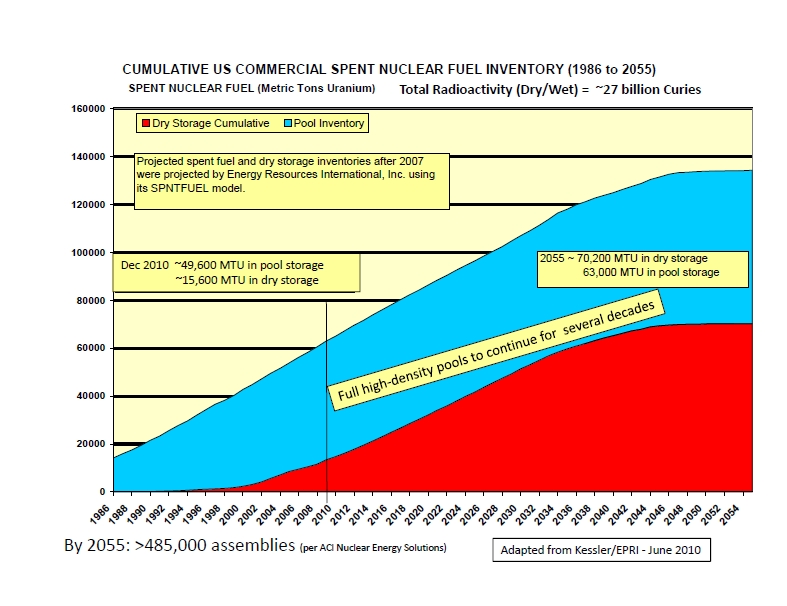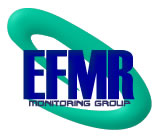PRESS RELEASE
FOR IMMEDIATE RELEASE: August 19, 2011
CONTACT: Linda Gunter, Beyond Nuclear, 301.455.5655
Nuclear Regulatory Commission recommends further review of Beyond Nuclear petition for emergency enforcement actions at Fukushima-style US reactors
[Takoma Park, MD] The U.S. Nuclear Regulatory Commission (NRC) has accepted several emergency actions for further agency review that were requested in a petition filed by Beyond Nuclear on April 13, 2011. The Beyond Nuclear petition seeks to suspend the operation of the dangerous and seriously flawed General Electric Mark I Boiling Water Reactors, 23 of which still operate around the U.S. and which are almost identical to the Fukushima reactors that melted down in Japan. The petition was co-signed by national and regional anti-nuclear groups as well as more than 5,000 individuals.
The Beyond Nuclear petition to the NRC asks that the Mark I reactors cease operations until several emergency actions are taken. The actions accepted by the federal agency for the further review include; 1) the NRC revoke the 1989 prior approval for all GE Mark I operators to “voluntarily” install the same experimental hardened vent systems on flawed containment structures that the Fukushima catastrophe demonstrates to have a 100% failure rate and; 2) that the agency immediately issue Orders requiring all U.S. Mark I operators to promptly install dedicated emergency back-up electrical power to ensure reliable cooling systems for the densely packed spent fuel pools. The GE BWR fuel pools are located at the top of the reactor building and currently do not have backup power if offsite and on-site electrical power were lost simultaneously.
“Fukushima demonstrates that a nuclear catastrophe can result from these same fundamental flaws in the Mark I reactors operating in the United States,” said Paul Gunter, director of the Reactor Oversight Project at Beyond Nuclear. “We are spotlighting these dangerous reactors to test the NRCs’ willingness to take enforcement action to protect public safety rather than protect the nuclear industry bottom line,” he said.
On July 19, 2011, NRC released its own “Near-Term Task Force Review of Insights from the Fukushima Dai-ichi Accident.” While the Task Force addresses the same two action items found in the Beyond Nuclear petition that were accepted by the review board, the Task Force’s conclusions are considerably weaker.
First, where NRC task force recommendation 5 states that the agency consider issuing an Order to Mark I operators to upgrade hardened vent systems on the containment, the public petitioners have requested the agency revoke all prior approval of the “voluntary” installation of the controversial venting system. The vents were seen to fail at Fukushima and are only in place to save the containment which is too weak to withstand a severe accident. The containments were retrofitted in the 1990’s to instead temporarily vent explosive gas, steam pressure and radioactivity to the outside atmosphere to save the containment component.
“Given the catastrophic failure demonstrated at Fukushima, these same designs should not be allowed to operate with experimental vents on containment,” said Gunter, “The GE reactor was originally licensed with the claim of a ‘leak tight’ containment so this after-thought of installing a vent for accident conditions is in fact a violation of that same license,” he said.
Scott Portzline, security consultant to Three Mile Island Alert, Harrisburg PA said, ”The NRC’s Task Force on Fukushima has also recommended that the Mark II design reactors, like the one at Limerick PA, also be ordered to change over to a reliable vent system. The Peach Bottom Reactors would be affected by such an order since they are of Mark I design.”
In its petition, Beyond Nuclear additionally asked that the NRC then provide the public with full hearing rights to first independently review any further experimental modifications to the acknowledged weaker and substandard Mark I containment system.
Secondly, where NRC task force recommendation 7 states that emergency back-up power should be provided to ensure make-up for water boiled off of overheated spent fuel pools following loss of offsite power, the petitioners’ request that reliable back-up power be provide to assure reliable cooling to prevent the pools from boiling off. The petitioners remain concerned about the unintended consequences of condensation from a spent fuel pool boil off affecting safety-related systems like electrical circuits and sump systems.
The NRC review board further recommended that the agency “reject” in part Beyond Nuclear’s requested actions for any further review to include; 1) “Immediately suspend operating licenses of all GE BWR Mark I units pending full NRC review with independent expert and public participation from the affected emergency planning zone communities,” and; 2) “Conduct public meetings within each of the ten-mile emergency planning zone for each GE BWR site for the purpose of receiving public comment and independent expert testimony regarding the reliability of hardened vent system or direct torus vent system.”
Beyond Nuclear and the co-petitioners will be provided an additional public meeting before the NRC’s Petition Review to present supplemental material and challenge agency recommendations to reject requested emergency actions. The date for that meeting has not been established.
-30-

